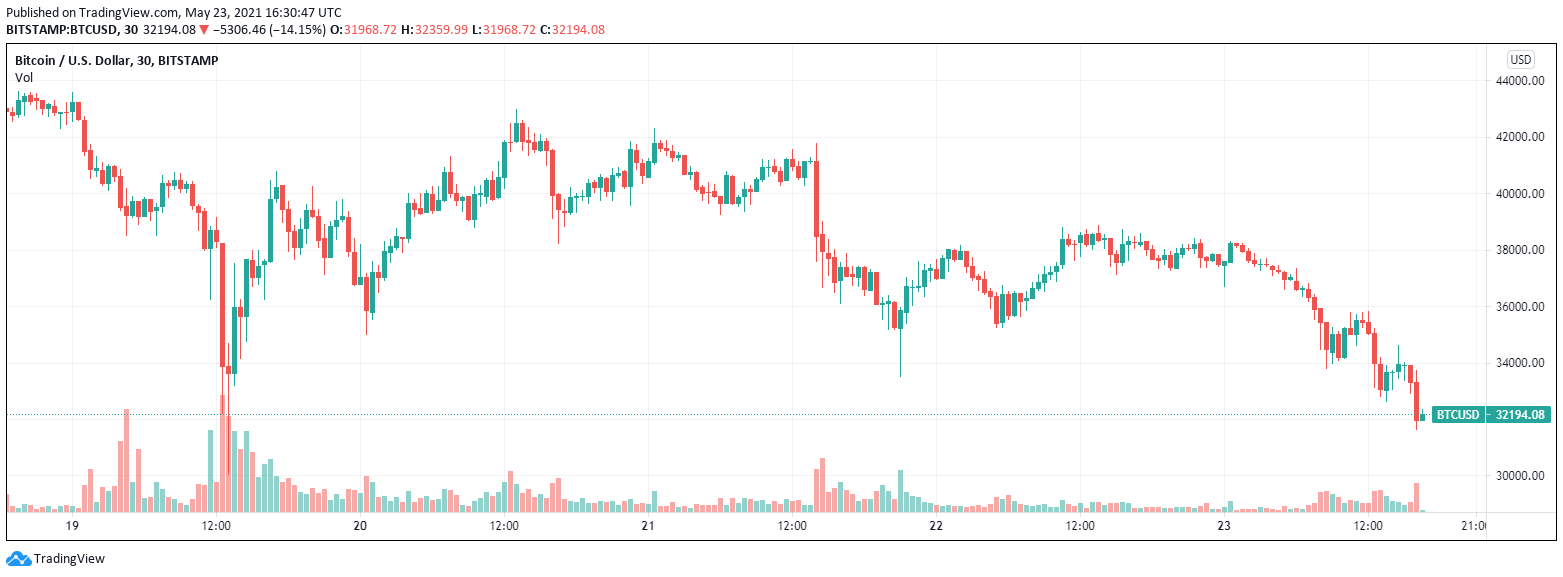Historically, institutions have always been the biggest skeptics of Bitcoin and cryptocurrencies as a potential asset class. Even at the height of the 2017 bull run, many financial institutions remained doubtful of crypto’s emergence and its ability to become mainstream.
However, a roaring start to 2021 saw Bitcoin climb over 300% at its all-time peak, which led to an influx of institutional investors. With key victories like Coinbase’s NADAQ debut, Bitcoin seemed to be gaining Wall Street’s goodwill.
This would not last however.
Following recent developments on China banning crypto miners and Tesla reverting its decision to accept Bitcoin payments, Bitcoin and the broader crypto market continue to sell-off to lower lows. In the past month alone, BTC is down 48%, with Ethereum and other altcoins faring far worse.

Related Reading | How Another Chinese Power Outage May Have Led to Bitcoin’s Flash Crash This Week
Deutsche Bank Firmly Iterates Bearish Stance on Bitcoin
Now, Deutsche Bank is firmly turning its back against the once red-hot digital asset.
In a note published earlier this week, analysts from Deutsche published a research note titled: “Bitcoin: Trendy is the last stage before tacky.”
In it, one analyst criticized the cryptocurrency for its susceptibility to selling pressure: “all it took for the cryptocurrency to fall out of style was one tweet and a Chinese government statement.”
“Those few words caused bitcoin’s value to plummet from nearly $60,000 in the days before to below $48,000. Next, on Tuesday, the PBoC reiterated that it would ban digital tokens as a means of payment, thus causing bitcoin to plunge just above $30,000 at one point — its lowest value since January.”
Another concern that was raised was Bitcoin’s lack of transactional utility. Deutsche argued that Bitcoin’s lack of liquidity failed to justify its high valuation and its legitimacy as an asset class. “The value of Bitcoin is entirely based on wishful thinking,” the note read.
With central banks and governments seeking to impose new regulations on the rapidly growing industry, there may also be less room for growth. China’s central bank, for one, is set to launch its own digital Yuan in place of cryptos by early next year.
Related Reading | China Sets the Stage for CBDC, Proposing Global Rules for Nations
Still, it’s important to note that financial institutions, including major banks like Deutsche, are often reactionary. Only months prior, Goldman Sachs and Morgan Stanley began offering Bitcoin products to institutional investors as the crypto’s price surged threefold.
With new catalysts and regulatory clarity in the coming months, the institutional paradigm will continue to shift.
Featured image from UnSplash









